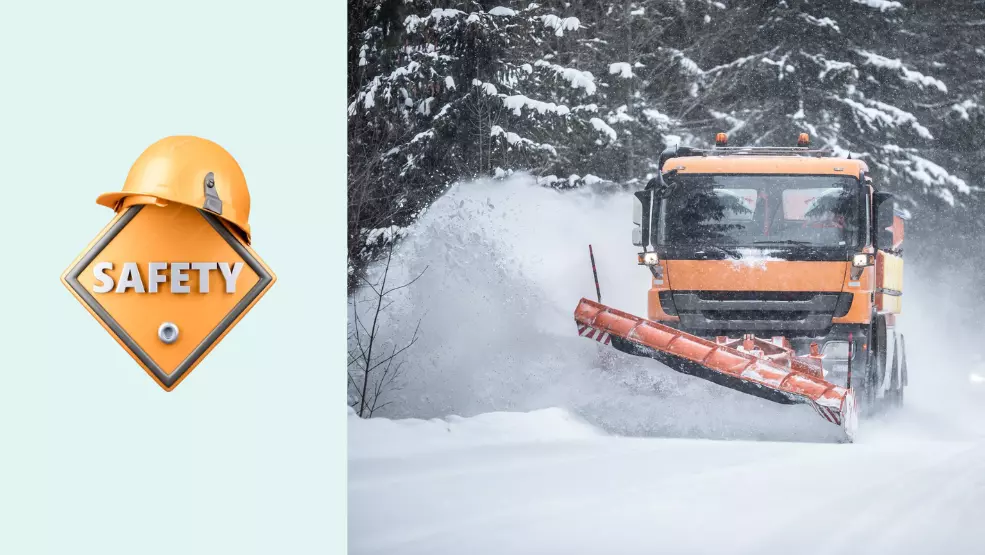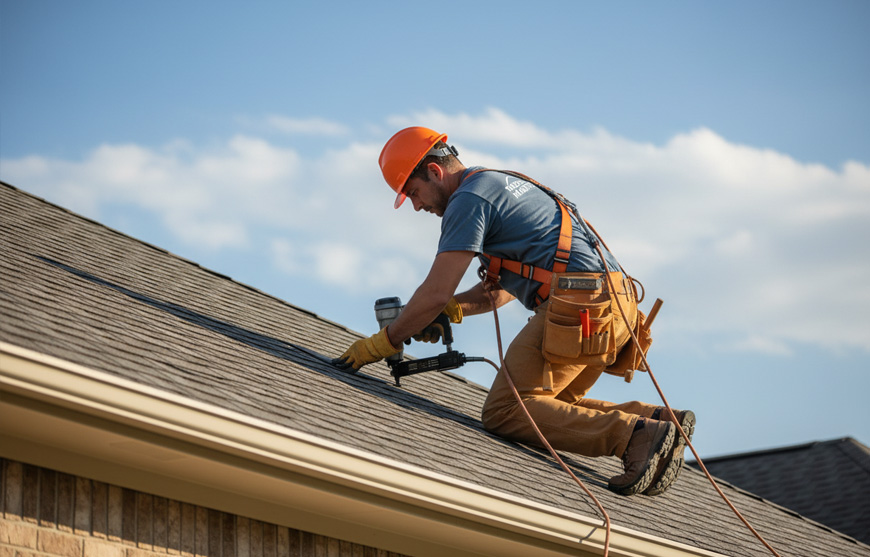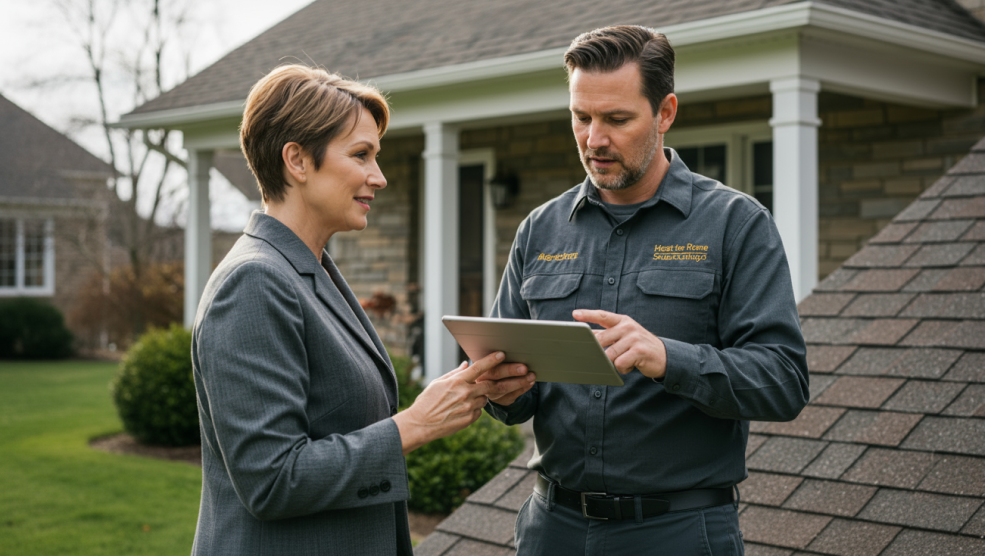According to the National Institute for Occupational Safety and Health (NIOSH), an average of 20 workers die each year from snow-related injuries. This emphasizes the importance of snow plow technicians taking measures to ensure their safety. Safety protocols are a key part of the training, ensuring that operators are aware of potential hazards and how to avoid them. It covers all the important aspects of safety and how to effectively use a snow plow. This includes understanding the proper use of equipment and the best practices for clearing different types of snow and ice.
Training is the first step to ensuring technician safety while snow plowing. However, this training should not end with learning the proper operation of snow plows and other equipment. This training only educates technicians to quickly and thoroughly clear snow and ice from roads and other surfaces. Like, basic training focuses on equipping operators with the knowledge and skills they need to navigate the challenges of winter weather. Not much is discussed in terms of safeguarding one against threatening incidents that can happen while snow plowing. Let’s learn more about the steps you can take to ensure the safety of your technicians.
Personal protective equipment (PPE) and visibility enhancements
Snow plow truck operators work in challenging conditions, especially during winter nights or low-light situations. It’s really important for them to wear reflective clothing and high-visibility gear to make sure that they can be seen by other drivers and pedestrians on the road. This helps to avoid accidents and keep everyone safe.
When it comes to safety equipment, gloves, goggles, and boots are essential for snow plow truck operators. Gloves protect their hands from the cold and from any sharp materials they may be handling. Goggles help to protect their eyes from any flying debris or harsh weather conditions. And boots provide solid footing to prevent slipping on the ice or snow-covered ground.
Specific types of reflective clothing and safety equipment recommended for low-light and winter weather conditions include reflective jackets, vests, and pants. These can have additional features like built-in LED lights for even more visibility. For safety equipment, it’s important to choose gloves that are waterproof and insulated, goggles with anti-fog and UV protection, and boots with good traction and insulation.
By wearing the right reflective clothing and safety equipment, snow plow truck operators can work confidently and safely, knowing that they can be seen and protected in any weather conditions.
Safe driving practices in winter conditions
Winter driving can be tricky, so it is important to follow ssafe driving practices. One important thing to remember is to keep a safe distance between your car and the one in front of you. This gives you more time to react should anything unexpected happen.
Another good tip is adjusting your speed to match road conditions. Sometimes, you might need to drive slower than usual to stay safe. It is also crucial to be aware of reduced visibility caused by snow or fog. Make sure your lights and windshield wipers are in working condition; they are necessary not just to see the road but also to increase visibility to other drivers.
Defensive driving techniques are extremely important in winter. This means being extra cautious and always staying aware of what’s happening around you. Look out for black ice, which is slippery and hard to see—making it very dangerous. Staying alert will help ensure a safe and smooth snow-plowing operation. By keeping these defensive driving techniques in mind this winter it will help you stay safe on the road.
Local snow plow operator regulations
In our area, snow plowing operations are governed by specific municipal ordinances, road maintenance guidelines, and permit requirements. These rules and regulations make sure that snow plow operators clear sidewalks, and designated snow storage areas, and remove snow from public roads properly. The permit requirements for operating snow plow trucks may include restrictions or conditions to ensure that the plowing is done safely and effectively.
The municipal ordinances outline the rules and regulations that snow plow operators must follow, while the road maintenance guidelines provide specific instructions for clearing snow and maintaining safe roads during winter. Permit requirements ensure that snow plow operators are qualified and have the necessary equipment to do the job correctly.
Overall, these regulations are in place to ensure the safety and accessibility of the roads and sidewalks during the winter months, and to make sure that snow plow operators are following the necessary guidelines to keep our community safe and functioning well.
Federal snow plow operator regulations
In the United States, snow plow truck operations are governed by specific federal regulations to ensure safety and efficiency. These regulations cover various aspects of vehicle maintenance, inspection, and operation.
The Department of Transportation (DOT) sets standards for snow plow trucks, including requirements for vehicle maintenance and inspections to ensure that the trucks are in good condition for operation. Commercial Driver’s License (CDL) regulations also apply to snow plow operators, ensuring that they have the necessary skills and qualifications to drive these specialized vehicles. Additionally, Hours of Service (HOS) regulations set limits on the amount of time a snow plow operator can drive and work to prevent fatigue and ensure safety on the roads.
These federal snow plow regulations are in place to maintain the safety of both the operators and the public, as well as to ensure that the snow plow trucks are properly maintained and operated. By adhering to these regulations, snow plow operators can effectively manage winter weather conditions while keeping everyone safe on the road.
Common hazards and risks involved in snow plowing
Snow plowing can be a tough job, involving many hazards and risks. First off, limited visibility due to heavy snowfall can make it hard for operators to see what’s in front of them, which can lead to accidents. And when roads are slippery and icy, there’s an increased risk of losing control of the truck. Additionally, plow operators can run into obstacles like curbs or debris hidden under the snow, potentially causing damage to the equipment or even overturning the truck. To make matters worse, long hours of plowing can lead to fatigue, making it harder for operators to stay focused and increasing the chances of mistakes. All these hazards combined can substantially increase the risk of accidents and injuries for snow plow operators.
To help keep everyone safe, federal regulations are in place to ensure that operators follow safety protocols and that the public is aware of the dangers of snow plowing. These rules help minimize the risks and make sure that everyone is doing their part to stay safe in snowy conditions.
Importance of safety compliance in mitigating risks
Safety compliance is crucial for snow plow truck operators to reduce the risk of accidents and injuries. By following safety protocols and receiving proper training, operators can work more safely in harsh winter conditions. The organizational culture also plays a significant role in promoting a safe working environment.
On construction sites, it’s important to adhere to key safety regulations to mitigate risks related to snow removal. These regulations include proper equipment maintenance, clear communication among workers, and regular safety inspections. By following these regulations, accidents and injuries can be greatly reduced.
Overall, safety compliance is essential for snow plow truck operators and workers on construction sites to mitigate risks associated with snow removal. By following safety protocols, receiving proper training, and adhering to safety regulations, the chances of accidents and injuries can be minimized, ensuring a safer working environment for all.
Grow your snow plowing business now
Step up and be a force for good. For every T-shirt you wear, over 700 gallons of water is consumed. You hold the power to reclaim gallons of water with every garment you wear. Choose minimalism; Save water. Mindful closet for a sustainable future!





